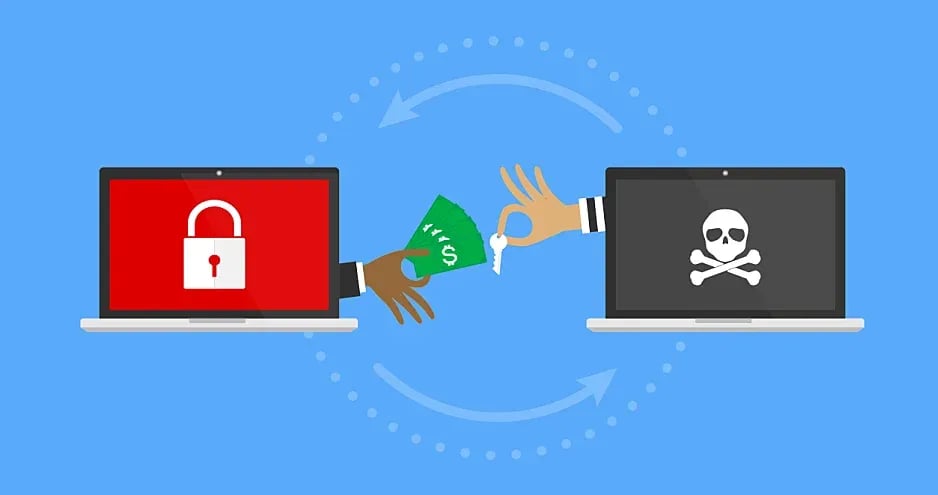Your Website Might Look Great — But Is It Secure?
Why Cybersecurity Must Be at the Center of Every Web Project for Churches, Schools, and Non-Profits
A Digital Front Door with Real-World Risks
In today’s digital world, a website is far more than just a digital brochure — it’s the front door to your organization. For schools, churches, and nonprofits, it’s where families explore programs, donors give generously, and members stay connected. Often built on WordPress, these sites are visually polished, flexible, and cost-effective.
But behind the scenes, a hidden risk lurks. While the focus is typically on design and content, security is often overlooked — and that mistake can have serious consequences.
WordPress Is Powerful — and That Makes It a Target
WordPress powers over 40% of the internet. It’s popular for good reason: it offers flexibility, an enormous plugin ecosystem, and affordability. But that popularity also makes it one of the most targeted platforms online.
In 2024 alone, Wordfence reported nearly 8,000 vulnerabilities discovered in WordPress plugins and themes. It’s not WordPress itself that’s the problem — it’s the lack of attention to how the site is built, maintained, and secured.
Many boutique marketing firms that build sites for mission-driven organizations focus heavily on design and storytelling, which they do well. But most give little, if any, thought to hardening the site against real-world cyber threats. Once the project ends, the organization is left to manage security and upkeep — often with no IT support or even an update plan.
The Myth of "Too Small to Target"
It’s easy to think, “We’re not a major corporation. Why would anyone want to hack us?” But cybercriminals don’t always chase big money — they chase easy targets. And smaller organizations are often easier to exploit.
A hacked website can bring much more than downtime. It can destroy donor trust, redirect funds, expose sensitive data, and permanently damage your reputation. If you rely on your website to communicate with members or collect online gifts, you simply can’t afford to ignore the risks.
Churches: Built on Trust, Vulnerable to Exploits
Churches are especially vulnerable because their brand is built on integrity. They rely on giving, and that trust can be shattered in a second if something goes wrong online.
Spoofing is one of the simplest attacks — and one of the most damaging. A fake donation page that looks nearly identical to your real one can intercept online gifts. Visitors think they’re giving to the church, but the funds are being redirected elsewhere. By the time the fraud is uncovered, not only is the money gone — so is the confidence of your members.
Then there’s the issue of livestreaming. For many churches, the livestream has become the global extension of their ministry. But livestreaming systems are a growing target. Hackers can launch denial-of-service attacks that take your stream offline mid-service. Worse, they can hijack your stream to inject explicit or offensive content, deeply embarrassing your church and breaking the trust of your viewers.
Schools: Holding Some of the Most Valuable Data
Schools may not handle bank accounts, but they hold something just as valuable — data. Student records, family contact details, and internal documents are all goldmines for cybercriminals. And the education sector has increasingly become a hotbed for ransomware attacks.
Emsisoft’s 2024 report revealed over 100 ransomware attacks on U.S. educational institutions in a single year. While these often begin with email phishing, a poorly secured WordPress site can be the weak link that gives an attacker access to broader systems.
The Real Problem: IT Isn’t in the Room
Most website projects are driven by marketing or communications teams. That makes sense — they own the messaging. But what’s missing is IT.
IT teams know how to ask the right questions: Where is the site hosted? Are backups running and tested? Are plugins being monitored and updated? Who has admin access? Is the donation page using secure protocols? Without this expertise at the table, the project may look great — but it’s a house with no locks.
Security isn’t something you layer on after the site is launched. It’s part of the foundation. The earlier IT is brought into the process, the stronger that foundation will be.
You Don’t Just Risk Your Site — You Risk Your People
When a school or church gets hit with a cyberattack, it’s not just a technical failure — it’s a people problem. Students, parents, donors, and members are affected. Their information is at risk. Their trust is shaken.
That’s why security must be seen as a leadership issue, not just an IT concern. Waiting until something breaks isn’t just reactive — it’s irresponsible.
It’s Time to Change the Conversation
There’s nothing wrong with building a beautiful website. In fact, you should. But beauty without integrity is dangerous. Whether you’re launching a new site or updating an old one, cybersecurity should be on the table from the beginning — right alongside branding, content, and design.
The truth is, most organizations don’t need to spend significantly more to be secure. They just need to involve the right people early enough to make the right decisions.
If you're not having a conversation about cybersecurity at the start of your web project, you're already behind.
References
- Wordfence. (2024). State of WordPress Security Report. Retrieved from https://www.wordfence.com/blog/2024/02/state-of-wordpress-security-report-2024
- Patchstack. (2024). State of WordPress Security: 2023 in Review. Retrieved from https://patchstack.com/whitepaper/
- Sucuri. (2023). Hacked Website Threat Report – 2023. Retrieved from https://sucuri.net/reports/
- Emsisoft. (2024). The State of Ransomware in the US – 2024: Education Sector Analysis. Retrieved from https://blog.emsisoft.com/en/45063/the-state-of-ransomware-in-the-us-2024
- Cloudflare. (2023). Understanding DDoS Attacks Against Livestreams. Retrieved from https://www.cloudflare.com/learning/ddos/
- Cybersecurity and Infrastructure Security Agency (CISA). (2023). Security Guide for Houses of Worship and Faith-Based Organizations. Retrieved from https://www.cisa.gov/protecting-houses-worship
- Christianity Today. (2023). Cyberattacks on Churches Are on the Rise. Retrieved from https://www.christianitytoday.com/news/2023/march/church-cyberattack-hack-security-giving-online.html
- ZDNet. (2023). Church Websites: The New Frontier for Hackers and Scammers. Retrieved from https://www.zdnet.com/article/church-websites-are-being-targeted-by-cybercriminals/
- IBM Security. (2023). Cost of a Data Breach Report 2023. Retrieved from https://www.ibm.com/reports/data-breach












